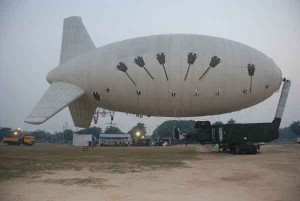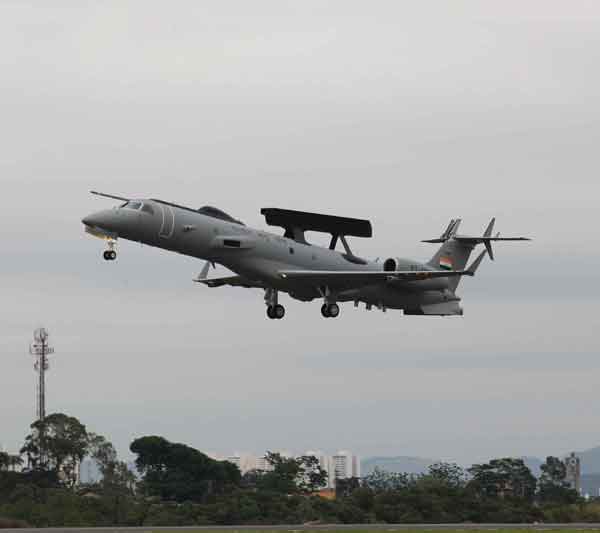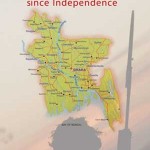Air or Aerospace Defence provides a secure foundation for the safe and effective launch of aircraft and missiles to tackle an airborne or space-based intruder. Besides, the sharp end comprising aircraft, missiles and air defence guns, the first to detect intruders are the radars. The radars, along with an efficient Command, Control and Communication system, form a comprehensive Air Defence Network. Is the surveillance network in the Indian airspace gap-free? Is there adequate overlap between low, medium and high levels of radar coverage?
It is the eyes and ears of the Air Defence of a nation that will first detect, validate, launch and then guide the various weapons, aircraft, missiles and anti-aircraft guns to destroy an intruder. In 2008, a report by the CAG on the preparedness of the Indian Air Force (IAF) observed, “Air defence is critical to the nation’s security yet the IAF holds less than the adequate number of surveillance radars needed for efficient and reliable detection capabilities for a credible air defence system.” An in-depth analysis of India’s Air Defence Ground Environment System (ADGES) had also revealed that the number and type of radars with the IAF were not adequate to provide coverage to the entire country.
Air or Aerospace Defence provides a secure foundation for the safe and effective launch of aircraft and missiles to tackle an airborne or space-based intruder. Besides, the sharp end comprising aircraft, missiles and air defence guns, the first to detect intruders are the radars. These, along with an efficient Command, Control and Communication system, form a comprehensive Air Defence Network. Is the surveillance network in the Indian airspace gap-free? Is there adequate overlap between low, medium and high levels of radar coverage? In a nuclear environment, an air defence system must be totally impregnable as successful penetration by even a single aircraft or missile armed with a nuclear weapon could mean catastrophic consequences. Besides, our own nuclear second strike capability needs to be protected against enemy attack. What measures have been adopted to cope with possible threats to the integrity of the Indian airspace?
Comprehensive Radar Coverage
Efforts to acquire radars of all varieties, AWACS and aerostats even though in small numbers, are steps in the right direction but there is more to be done. The DRDO needs to move ahead quickly in its ambitious project to develop a space-based reconnaissance and surveillance system to provide airspace cover over the entire country.
The existing ground-based surveillance assets are woefully inadequate for the current levels of responsibility…
The existing ground-based surveillance assets are woefully inadequate for even the current levels of responsibility calling for a total revamp. Our diverse frontiers – from the seaward approaches to the South East, South and South West to the marshes of the Rann of Kutch, the Thar desert, the riverine areas of Punjab to the hills and mountains of the mighty Himalayas extending from Jammu and Kashmir all the way to the East and North East India, are covered by ground-based radars in combination with aerostat radars that cover the seaward approaches including the island territories quite effectively. In the ground-based segment, both low and medium level radars can cover up to the medium levels while aerostats can be used in critical areas such as those abutting the neighbouring countries of Sri Lanka and Bangladesh. Primarily due to the inhospitable terrain, it is the northern and north eastern parts of the country that are difficult to provide adequate radar coverage to. This is where the Airborne Warning and Control System (AWACS) aircraft will play a critical role in providing radar warning of approaching intruders.
Airborne Warning and Control System
The AWACS aircraft would be a more cost effective option as it would also provide low level cover deep inside enemy territory not only to direct own forces but also to track hostile aircraft departing for missions from their bases thus facilitating positive identification and increasing substantially the reaction time available to the air defence system. While there is no debate over the necessity of AWACS aircraft, the question is that of numbers. In the event of imminent or outbreak of hostilities, AWACS aircraft would have to be ‘on station’ round the clock in adequate numbers to cover the entire length of hostile borders. Given the limitations of endurance of the aircraft and the crew, serviceability considerations of an infinitely complex machine and the volume of the airspace to be scanned, the IAF would have to reassess the size of the fleet of AWACS required to be procured.
…the fleet of Phalcon-equipped IL76 aircraft will merely provide a learning experience…
The fleet of Phalcon-equipped IL76 aircraft being acquired in the next two to three years, will merely provide a learning experience. To meet with the needs of the 2020s, the size of the AWACS fleet would have to be significantly enhanced and hopefully augmented by DRDO’s Embraer-based system. Integrating the AWACS into the Air Defence System, developing the technical skills to maintain and operate the platform and finding the resources to procure these machines in the requisite numbers would be some of the major challenges for the IAF and the nation. To exploit the advantage of extended low level cover provided by the AWACS, air defence aircraft must be armed with BVR missiles with long-range capabilities to intercept hostile targets well before they are in a position to pose any threat to the AWACS aircraft itself.
Low Level Warning Radars
Low level warning radars would form the first line of defence to detect intruder aircraft and missiles at low altitudes. These would be more conveniently deployed in areas with largely flat terrain such as the Thar desert and the plains of North India. Apart from radars purchased from abroad, the indigenously developed Indra and Rohini radars need to be inducted soon in larger numbers. With Bharat Electronics Limited (BEL) gaining confidence in its capability to produce radars of quality and also incorporating modifications to the reported satisfaction of the IAF, the situation needs an element of urgency in provisioning.
The obvious advantages of an indigenous system are easy availability of spares and quick response for trouble shooting. These numbers will, however, be probably met by 2015 or later. Mountain radars are also being procured initially to cover the northern areas and then gradually the central and eastern borders along the Himalayas. Complete radar coverage may be possible by 2020.
Medium Power Radars
Induction of new medium power radars commenced in March 2011 and these are expected to be operational by December 2012. Currently, there is a problem with maintaining the aerostats. Otherwise, their performance is like that of a static AWACS. Once the glitches are resolved, these too, need to be inducted in larger numbers. These new medium power radars, AWACS and the indigenous AEW&C aircraft, along with aerostats and mountain radars are expected to provide seamless radar cover across the country.
Threat from Ballistic Missiles
This is an area where not much information is available in the public domain. The requirement is to detect the launch and track the movement of ballistic missiles during their passage in space and when they re-enter the atmosphere, to home on to the target. This requires a series of space-based radars to cover the areas of interest and to have special ground-based ones which will take over the task of tracking missiles as they enter its coverage area, then launch anti-ballistic measures to effect successful intercept. It is possible to use submarine launched/aircraft launched anti-ballistic missiles too.
Cruise Missiles and UAVs
Cruise missiles launched from airborne/ground based/naval platforms will be the most difficult to detect and intercept due to their small radar signature and low level flight profiles resulting in late detection and low reaction time for successful interception. Cruise missile attack is a challenge that will require enormous resources, manpower and effort to counter. Airborne platforms equipped with radar and infra-red detection capability could provide the solution. Given the gaps in radar coverage over the entire country, anti-cruise missile measures need to be adopted on a war footing.
UAVs, especially the armed variety, are gradually emerging as the new threat. Designed with stealth characteristics, armed with lethal weaponry of the air-to-air or air-to-ground variety, this potent mix will require enormous effort and resources to counter.
Networking of Radars
Net-centric warfare is the future of war. The challenge for the IAF is to gather the radar characteristics of each of these sensor platforms, low level warning, mountain and medium power static radars, the AWACS and the indigenous AEW&Cs, meld the radar picture so that an Air Defence Commander can easily identify, track and assign the appropriate weapon system to tackle the incoming threat. For the IAF, its communication network, serving as the foundation – the AFNET, is already in place. The ability of airborne and land-based sensors to exchange data and resolve anomalies needs to be built-in when purchasing a new sensor or worked on to ensure seamless integration.
Low level warning radars would form the first line of defence to detect intruder aircraft and missiles at low altitudes…
Networking of Military and Civil Radars
Surveillance radars of the Army and the Navy need to be interlaced with the respective nodal radars of the IAF. While these will have control over movement of airborne platforms within their theatre/fleet, they will benefit from the information provided by the respective IAF nodal radars on incoming movement and also to pass on outgoing movement to enable effective control. In the case of the Navy, as the fleet approaches IAF radar coverage, exchange of data amongst them is needed in order to obviate conflict. The requirement exists for the three services to be able to exchange air movement data in real time through a common interface based on their respective communication networks. It is equally essential for data fusion of the air picture of civil sensors with the military sensors across the country. Turf battles are to be expected in peacetime with wiser heads being required to resolve issues. This will reduce the IAF’s reaction time and greatly enhance its response to even peacetime air intrusions such as hijacking or any other contingency.
Command and Control System
The availability of different types of radars from low level to medium level static, to the mobile ones such as the AWACS, requires software programs that will enable all radars to exchange target information seamlessly. The software should be able to validate the most accurate blip to provide a clear picture to the Tactical Commander for ease of decision making. The indigenous Integrated Air Command and Control System (IACCS) set up by the IAF is also coming up across the country.
UAVs, especially the armed variety, are gradually emerging as the new threat…
Electronic Warfare Capability
All radars and sensors need to be equipped with protection against electronic attack. While this would be a standard fit on all types of radars, the variety and the need to train and even modify the software to cater to different contingencies will pose a great challenge for the IAF.
Training
Due to the proliferation of radar types with varying capabilities, graduated training modules covering each type of radar and cross-training wherever necessary, will enable Air Headquarters to plan the career profile of each level of supervisory staff whether an officer or an airman. It is also time to go for delegation of tasks such as fighter controlling can be done by personnel below officer rank after suitable training. In certain cases, automation can also be an option.
…Surveillance radars of the Army and the Navy need to be interlaced with the respective nodal radars of the IAF…
Advancements in Technology
Trials are being conducted in the USA for using high altitude Unmanned Blimps operating at altitudes of over 20,000 metres fitted with radars to orbit over designated areas for hours to monitor the movement of airborne vehicles and even ground-based ones. The IAF could even consider using high altitude UAVs fitted with radars to perform such tasks.
Conclusion
Given the overall responsibility of Aerospace Defence, the challenges before the IAF in providing an effective and seamless countrywide radar cover and the task of keeping up with technology are daunting. The emerging threats of the ballistic and cruise missile and UAVs will require tremendous efforts by the tri-services of the nation.
…Communications protocols would have to be drawn up within the services and with Civil Aviation sector…
The vast area and varied terrain demand large numbers of different types of radars – ranging from the low level, to the mountain variety, from medium power to aerostats and AWACS.
There will be problems related to working on source codes of different radars to arrive at an integrated radar picture. Communications protocols would have to be drawn up within the services and with Civil Aviation sector. Apart from the sheer numbers, there is a requirement for an effective interface between all military radars with their civilian counterparts. An overarching command and control set up, which may step on the toes of the numerous users, will require a mature resolution. Hopefully, like all challenges in India, only when these requirements are met, can one rest assured that the radar coverage in India will have the capability to cope with both peacetime and wartime threats!








“Efforts to acquire radars of all varieties, AWACS and aerostats even though in small numbers, are steps in the right direction but there is more to be done.” – This is confusing technology wise. AWACS (and AEW&Cs) are air borne platforms. AWACS are fitted with RWRs (radar warning receivers). They are meant for Electronic Warfare deployments. They do not carry phased array radar sets for tracking or beam forming applications.. Although there are some overlaps with radar technology, electronic warfare (EW suites) is essentially “passive”, i.e. just like a listening post. Ground based radar stations have different purpose and applications.
“Besides, the sharp end comprising aircraft, missiles and air defence guns, the first to detect intruders are the radars” – Not really ! These are radar warning receivers (RWR) in contrast to radar receivers. There is vast difference in technology (and operation) between the RWRs and radar receivers due to the fact that the former is wideband operation whilst the other is narrow band since one knows here the carrier frequency (correlation receiver) ! Besides, for the RWRs one must have a library of hostile emitters which is built up from a priori threat intelligence.